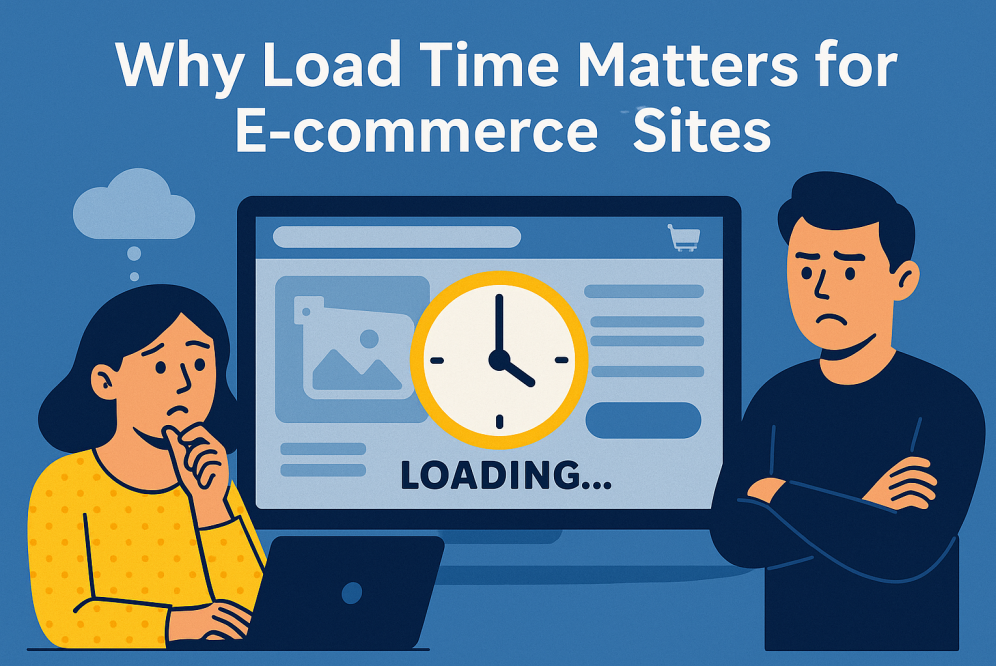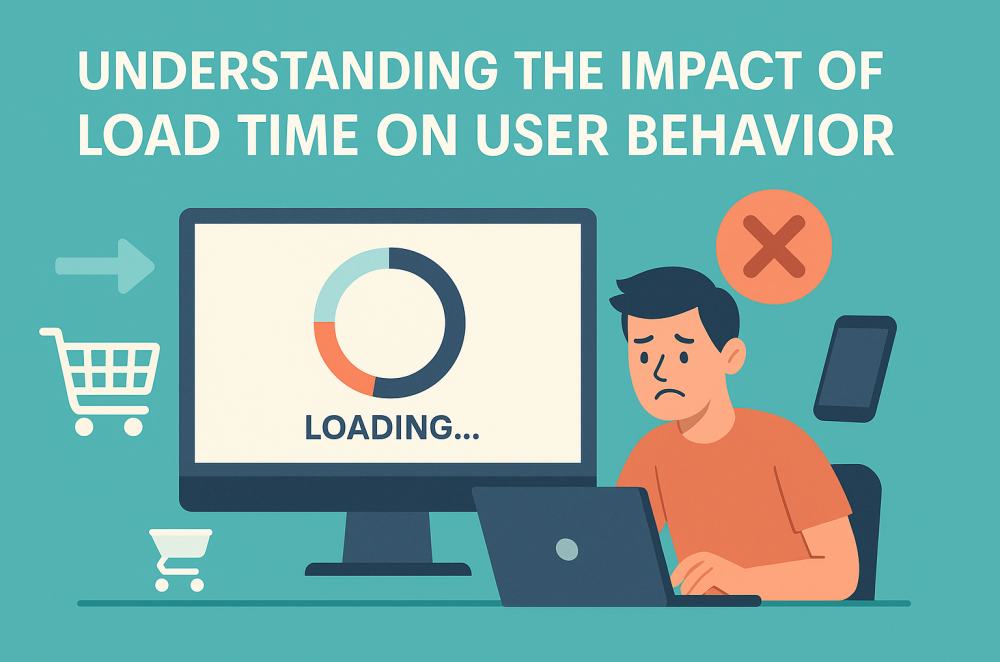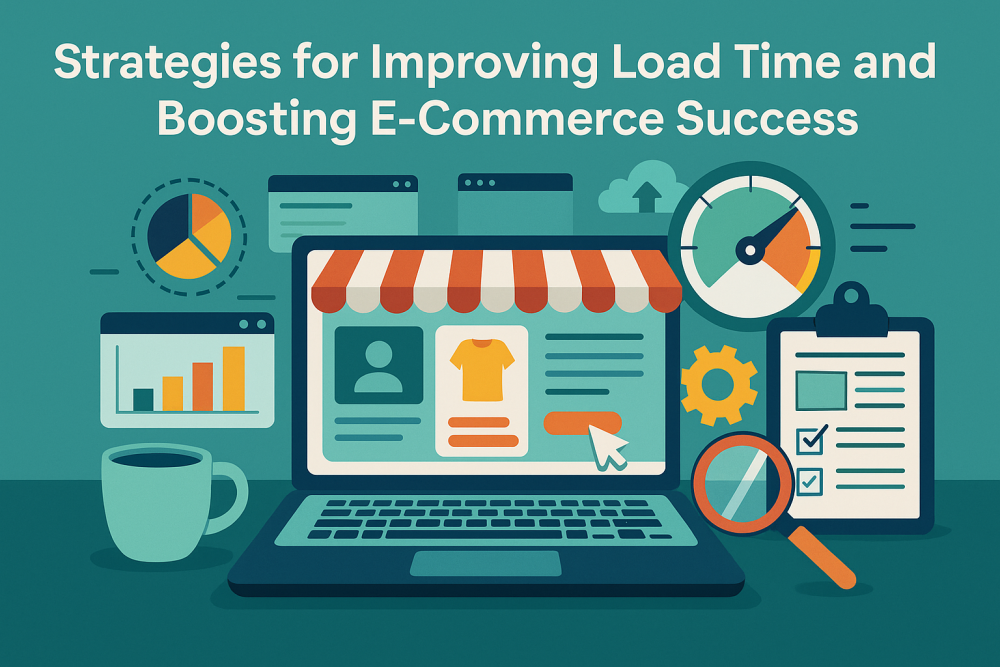
Load time is like the first hello when a customer clicks onto an e-commerce site. It’s all about speed right now in this fast-paced digital marketplace. People are doing their shopping online more than ever, and if your site takes its sweet time to load, potential buyers might move on faster than a scrolling thumb on a social media feed.
Picture this: shoppers land on a website, eager to check out the latest deals or a trendy product, but that loading icon keeps spinning longer than it should. In a world where every second counts, if your e-commerce site doesn’t greet visitors quickly, you’re at risk of losing their interest faster than you can say ‘free shipping.’ Studies reveal that just a few seconds of delay can drastically impact user experience and conversions. It’s like showing up late to a party and expecting warmth and excitement—except, online, they’d already be partying somewhere else!
Now, think about first impressions. Just like in real life, they matter online too. For e-commerce sites, the first impression often boils down to how quickly your page loads. A fast-loading site not only gives off a professional vibe but also builds trust with shoppers who want easy and efficient experiences. In contrast, if your page lags, shoppers might question the quality of service they’ll get. It’s fundamentally about making visitors feel welcomed and accommodated right from the get-go, setting a positive tone for their entire shopping journey.
Understanding the Impact of Load Time on User Behavior

When we’re talking about websites, patience isn’t exactly a common virtue among users. If a site takes too long to load, folks are more likely to click away than wait around. It’s like waiting in line at a crowded store when there’s a perfectly good online option next door.
The bounce rate metric tells us how quickly visitors leave a site without interacting further. A sluggish e-commerce platform can bump this rate higher than you’d like, resulting in missed opportunities and potential sales. Even worse, it can lead to abandoned carts where customers get cold feet before they even get to the checkout.
Take a look at some brands that noticed their websites were dragging and decided to kick their speed into high gear. For many, the results were eye-opening. Faster load times left users happier, more engaged, and eager to buy–right there and then.
Let’s not gloss over mobile users. They’re shopping on their phones more often, and they want those pages to load pronto. Slow speeds on mobile are a huge turn-off and send potential customers scrolling elsewhere–real quick.
Improving load time isn’t just a tech tweak; it’s about aligning with how people behave, especially online. In this always-on era, you’ve got to meet shoppers’ expectations, keeping things quick and seamless.
Technical Insights: Factors Influencing Website Load Speed

Ever wondered why some websites load in a flash while others take their own sweet time? It boils down to a mix of behind-the-scenes tech stuff. Server performance plays a big part here—think of it as your website’s powerhouse. If those servers aren’t up to snuff, it’s like putting a slow engine in a sports car.
Another major player in speed is your website’s design and code. Chunky images or clunky scripts can drag your site down, making it a bit of a digital uphill climb for users. Streamlining the design and optimizing code can shave off precious milliseconds.
Now, let’s talk about Content Delivery Networks, or CDNs for short. These bad boys help get your content to users faster by storing copies of your site across different locations worldwide. So, when someone in Australia accesses your US-based site, they’re getting data from the closest place, speeding everything up.
Lastly, don’t forget backend processes. Think of them as the ‘out of sight, out of mind’ heroes of your website. Optimizing these processes to reduce latency ensures smoother and quicker experiences. Meanwhile, minifying code, which means trimming down the unnecessary bits in your scripts, can also do wonders. Keeping things lean and clean is the real trick to upping that speed game.
Strategies for Improving Load Time and Boosting E-Commerce Success

Ready to amp up your website’s speed? Here’s where we get hands-on with practical tips that can make your e-commerce site fast and frictionless.
First off, take a good look at those images. Yeah, they make your site look pretty, but if they’re too big, they’re a major speed bump. Shrinking the file size while keeping that crisp quality can work wonders—think of using formats like WebP for an even bigger boost.
Now, let’s chat about browser caching, where you can store some website data on users’ browsers. It’s like leaving a trail of breadcrumbs that helps users revisit your site faster since everything’s not loading from scratch each time.
Compression techniques, too, can lighten the load. Tools like Gzip help in squeezing your files down, which means quicker loading times. It’s like vacuum-packing your website so everything moves faster down the internet pipes.
Don’t forget about asynchronous loading. It’s a fancy way of saying ‘load some stuff later.’ This makes sure the important elements show up first, keeping your visitors engaged while other parts load in the background.
Lastly, regular speed checks are essential. Keep an eye on things with tools like Google’s PageSpeed Insights. Monitoring insights can really help keep speeds in tip-top shape, ensuring your site is always running at its best.


I really enjoyed reading this! You made it so clear why site speed isn’t just a tech issue—it’s a customer experience issue too. I loved the reminder that even just a second’s delay can mean losing potential sales. It really motivated me to start taking load time more seriously for my own site. Do you have a favorite quick fix that you usually recommend to shave off a few seconds without doing a full site overhaul? Thanks for making such an important topic easy to understand and actionable!
Hi Bob,
Thanks so much—I’m really glad the post helped highlight just how crucial load time is for the overall customer experience! You’re absolutely right—even a one-second delay can have a big impact on conversions.
As for a quick fix, image optimization is often my go-to starting point. Tools like TinyPNG or WebP converters can dramatically cut file sizes without sacrificing quality. Pair that with enabling browser caching or using a lightweight caching plugin (if you’re on WordPress), and you’ll likely see a noticeable speed boost without a full site overhaul.
Appreciate your thoughtful comment—wishing you great results as you optimize!
Best,
Thierry
Great post, Thierry—this really drives home how crucial load time is for e-commerce success. The analogy of a slow site being like showing up late to a party is spot on; customers want instant access, and if they don’t get it, they’re gone. I especially appreciated the clear breakdown of both the technical and behavioral aspects—CDNs, compression, and asynchronous loading are all tools too many small business owners overlook.
Out of curiosity, which optimization strategy do you think provides the biggest return on investment for newer e-commerce sites working with limited budgets?
– Scott
Hi Scott,
Thanks so much for the kind words—I’m glad the party analogy resonated with you! You’re absolutely right: today’s customers expect speed, and even a few seconds can make or break a sale.
Great question! For newer e-commerce sites on a tight budget, I’d say image optimization often provides the biggest ROI. It’s relatively easy to implement and can significantly reduce load times without needing expensive tools. Pair that with a solid CDN (like Cloudflare’s free plan) and basic caching, and you’ve already made huge strides without breaking the bank.
Appreciate your insight and thoughtful feedback!
Best,
Thierry